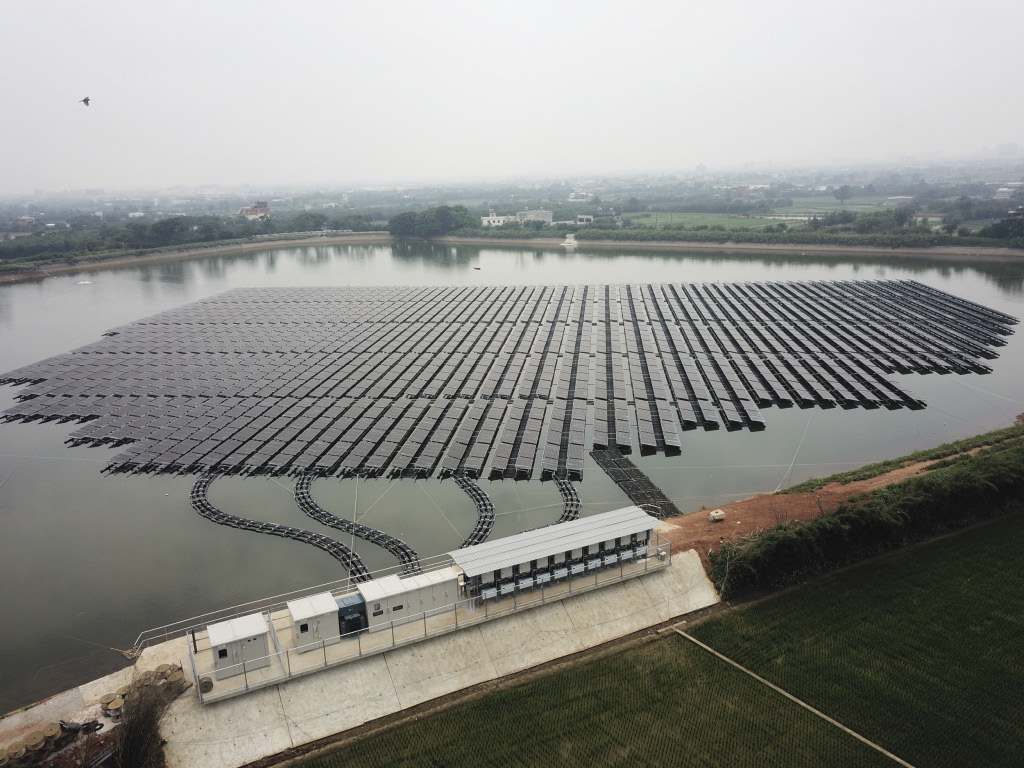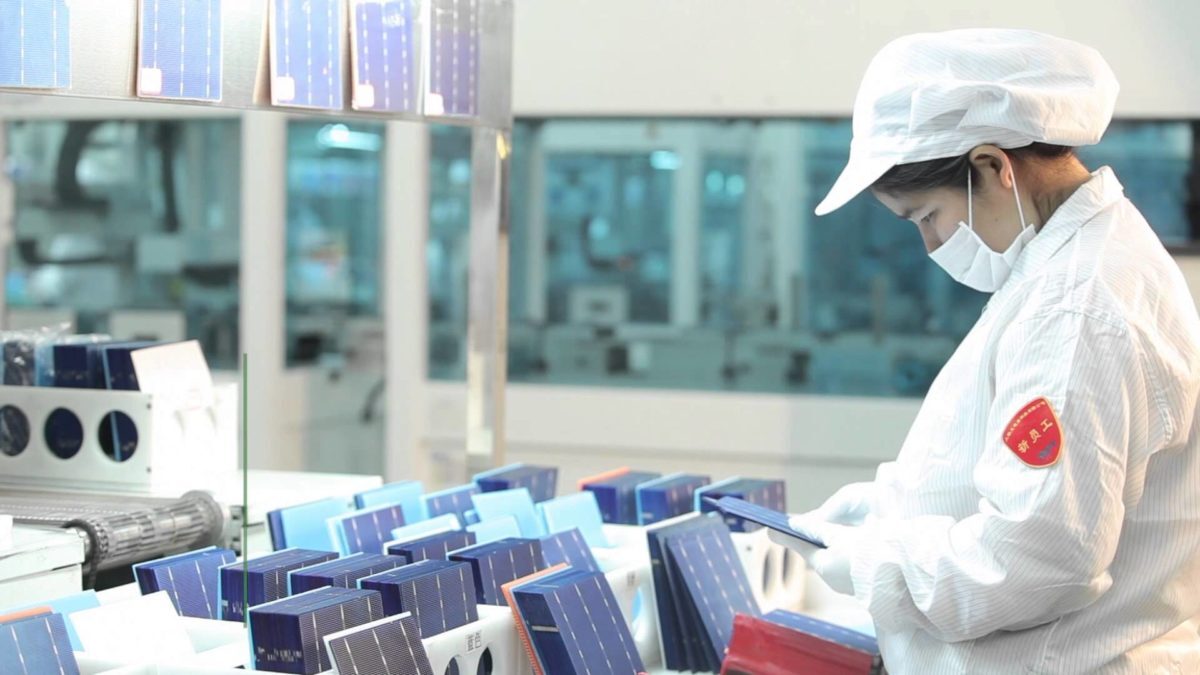From pv magazine, November edition
October’s Energy Taiwan conference kicked off with opening remarks from Republic of China (Taiwan) President Tsai Ing-wen, in a demonstration of the current administration’s commitment to the PV industry that can be matched with corresponding policies. The island’s highest-ranking leader stood on firm ground when she said that Taiwan will achieve its ambitious goal of 20 GW of PV capacity deployment by 2025, and remain a leader in advancing the green energy agenda. But achieving such ambitious goals doesn’t come without challenges for the small island.
To create the demand necessary to meet the government’s bold capacity goals, Taiwan offers one of the world’s highest feed-in tariffs, ranging between TWD 4.04 and TWD 4.87 ($0.13 and $0.16)/kWh. This incentive is driving Taiwan’s downstream PV market, which will hit an installed capacity of 1.5 GW this year, according to PV InfoLink.
The analysts also project that the Taiwanese solar market will hit a new capacity record of 2.2 GW of PV deployment in 2020. And the stability of Taiwan’s attractive FIT policy is encouraging foreign investors, such as Vena Energy, to open local offices.
From cells to modules
Cell manufacturers who once led the world are following downstream market demand, and remodeling and structuring their business plans accordingly. Unable to compete with mainland China’s pricing, Taiwanese cell manufacturers have turned to module production.
Solar cell manufacturer TSEC Corp. first moved into module development with a small production plant in 2012, but last year it developed a brand-new module manufacturing facility with 1.2 GW of capacity. In 2019, the company says it will produce 400-500 MW of module capacity, and just 20 MW of cell capacity.
Taiwan’s PV manufacturing industry is being kept afloat by the government’s Voluntary Product Certification (VPC) incentive, which awards a 6% higher FIT rate to projects that incorporate high efficiency cells and modules produced on the island. But next year, the Taiwanese-favoring VPC policy could be dropped to 3-4%.
“The government wants to protect Taiwan manufacturers,” says Corrine Lin, chief analyst at PV InfoLink. “If they continue the VPC policy, then suppliers can still ship to the local market. But if it is canceled, then other Southeast Asian manufacturers could cause serious problems.”
Could cause problems, indeed. With Trump’s removal of the bifacial exemption to Section 201 tariffs on imports to the United States, and the end of Europe’s antisubsidy and antidumping minimum import price (MIP) measures on Chinese products, locally manufactured cells and modules are going almost exclusively to the domestic market. TSEC Corp. says that approximately 98% of its product is staying in Taiwan.
But manufacturers are hoping the government will increase the VPC bonus for local cell and module makers by an additional 3% if they can even further improve efficiency – which could help keep Taiwanese suppliers competitive.
Further downstream
Taiwan’s PV manufacturing industry is continuing to diversify its offerings across the board – trending even further downstream. Manufacturers are placing a larger part of their business models on EPC and project development work – and preparing for the local market PV deployment ramp-up.
“Right now, about 90% of our business comes from modules, and about 10% comes from EPC work and project development,” says William Liao, senior vice president of TSEC Corp. He says that by the end of next year, the company expects this to flip, and the EPC and development side of its business to be its largest segment. TSEC Corp. has 60 MW of projects in the queue and expects to develop 150 MW of capacity over the next three to five years.
Local manufacturer Motech says that 40% of its business is now also coming from EPC work in Taiwan, and that it is gearing up for an even larger boom next year.
From rooftops to ground-mount
With limited available roofspace remaining on government buildings, PV development is moving toward ground-mounted installations. “The government is releasing public land for PV development,” says Daniel Lee, special assistant of the Taiwan Photovoltaic Industry Association (TPVIA).
“Next year is the year of the groundmount. We expect to see ground-mount applications booming over the next three years,” says SH Liao, vice president of the energy business at AU Optronics (AUO) Corp. The company, which is one of Taiwan’s leading cell manufacturers, has also expanded its business model to become a fully integrated supplier, from wafers and modules down to project development and software. But EPCs are running into challenges getting their ground-mounted projects, well, off the ground.
Complicated land transfers
While the Taiwanese government has a strong will to transition toward renewables, and incentives are robust, projects are facing development challenges due to land ownership and usage requirements.
“The biggest challenge is land,” says TÜV Rheinland’s manager of solar in Taiwan, Paul J.H. Wang. Space is limited on the small island, and an individual large-scale PV site requires land mass that typically runs across several properties. “If you want to develop a 1 MW project, you might have to deal with 10 landlords,” he adds.
One-by-one negotiation is proving to be exhausting for developers, and many have hired independent consultants to help lessen the time-consuming burden of getting property owners on board. TPVIA’s Lee says that delays over getting land switched over for PV development comes down to human greed, adding that “long negotiations are taking place surrounding the selling of land because property owners are asking unreasonable costs.”
When asked about the feasibility of the government achieving its ambitious solar goals, PV InfoLink says it believes that Taiwan has the potential to reach its objectives. “Developers are eager and module manufacturers have enough capacity to build. If the land is available, then they would be able to do it, but this is the challenge, says Mars Chang, research assistant at PV InfoLink.
To realize 20 GW of solar capacity in Taiwan, developers, landowners and the government will need to collaborate more. closely. “It is now known that it is mandatory that the developers meet with communities and landlords first as a part of the process. This is the most important element,” says TÜV Rheinland’s Wang.
Political influence
In the debate over the land grab for solar, PV InfoLink’s Chang references an 800 MW project that was approved to be developed in Yunlin County, but 70% of the land was owned by individuals, and just 30% by government. Chang says that the local government has tried to convince individual landowners to build the solar plant, but the general population has been resistant to its development and prefers that the space is developed for industrial purposes.
But several industry players at the Energy Taiwan conference pointed to the upcoming 2020 government elections as the reason that projects are not being approved or moving forward. Pointing to halted projects in both Yunlin County and Chung Hwa, solar executives claim that the elections and political differences between the pro-nuclear Kuomintang (KMT) and pro-solar Democratic Progressive Party (DPP) are to blame for delays.
The 2020 Taiwan presidential election is scheduled for January, and the DPP’s pro-renewables incumbent President Tsai Ing-wen is running for another term. Her primary opponent, running on the KMT ticket, is Han Kuo-Yu, who had yet to release details of his energy policy platform at the time of Energy Taiwan.
TPVIA’s Lee said he is confident that the island’s PV policy and objectives will continue under either candidate. Developers sign a 20-year PPA under the FIT scheme, and it is unlikely that the FIT will be removed, even if there’s a turnover in party power.
“One thing that is certain is the FIT policy will remain the major driver behind solar adoption for the short term, regardless of party alternation,” says PV InfoLink’s Chang. “For the long term, it will depend on the change of solar industry and the ruling party’s views by then.”
PV vs. agriculture
Several industry professionals in Taipei claim that land challenges and slow-moving bureaucratic project approvals come down to an internal war between solar and agriculture. But others argue that this is a challenge of the past, and that progress is moving forward now that the technology and the economics of PV investment are better understood.
“I think that the situation is getting better. Some farmers now realize that it is quite profitable. You don’t have to take care of the land, worry about the floods or the crops – you just receive money,” says TÜV Rheinland’s Wang.
Severe land subsidence areas that are no longer suitable for farming but viable for PV plants are being taken advantage of – and these types of projects are being developed in Changhua, Yunlin and Chiayi counties. The government is also pushing for projects to be developed in salt work areas and landfills, which are not particularly easy for other industries to use.
In 2017, Tatung developed the first PV plant on a former landfill site. The 2 MW “Taipei Energy Hill” project covers three hectares of the Fudekeng Environmental Restoration Park, which was a large landfill site in Taipei from 1985 to 1994. The project came about as a result of a collaboration between Taipei’s city government and the utility. The project won the 2018 Taiwan Real Estate Excellence award.
Floating potential
Beyond landmasses, water surfaces are also on the agenda of several local manufacturers and project developers. AUO’s development business is deploying floating PV projects across the island and has partnered with Taiwan’s longstanding floater manufacturer, Sun Rise E&T Corp.
Launched in 1995 as a producer of HDPE pipes for chemicals and water transportation, and then on-sea net cages, Sun Rise E&T Corp. got its start in the PV industry as a floating system provider in 2010. The company’s floating PV racking structures have been deployed for 29 projects in Taiwan for more than 82 MW of solar capacity, with the majority installed in Hsinchu and Taoyuan.
Sun Rise supported Tsai Ing-wen prior to her taking office, when she was in charge of a think tank, with analysis for floating PV potential. After calculating available fish farms, abandoned ponds and lakes, the company’s sales manager, Eric Tung, predicts that there will be 6 GW of floating solar capacity in Taiwan over the next 10 years. But Taiwan’s floating PV market faces other challenges, such as typhoons. When asked about extreme weather events, Tung says that one of his company’s projects has survived four typhoons without damage.
Adding to the environmental challenges are ecological concerns. “Many manufacturers in Taiwan really believe in the potential for floating PV on fish farms, but still many local people think that it won’t work,” says Mars of PV Info Link. “Floating is a challenge, because environmental parties continue to argue against the impacts.”
With the challenges faced surrounding land availability, several developers argue that floating PV systems will be necessary to meet the government’s ambitious objectives. And once again, the government, industry and community will need to come together.
This content is protected by copyright and may not be reused. If you want to cooperate with us and would like to reuse some of our content, please contact: editors@pv-magazine.com.



By submitting this form you agree to pv magazine using your data for the purposes of publishing your comment.
Your personal data will only be disclosed or otherwise transmitted to third parties for the purposes of spam filtering or if this is necessary for technical maintenance of the website. Any other transfer to third parties will not take place unless this is justified on the basis of applicable data protection regulations or if pv magazine is legally obliged to do so.
You may revoke this consent at any time with effect for the future, in which case your personal data will be deleted immediately. Otherwise, your data will be deleted if pv magazine has processed your request or the purpose of data storage is fulfilled.
Further information on data privacy can be found in our Data Protection Policy.